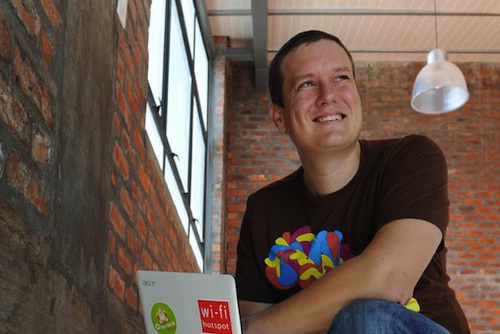
[By Henk Kleynhans]
The department of communications and the Independent Communications Authority of SA (Icasa) are sitting on the digital equivalent of millions of hectares of fertile but fallow land in the form of several hundred megahertz of underused frequency spectrum.
This capacity is waiting to be unleashed on the market and can help bring broadband services to many more South Africans over the next few years.
The spectrum being referred to is the so-called “white space” between television channels on the VHF and UHF frequency bands — several hundred megahertz of sub-900MHz spectrum frequency ready to be put to good use by telecoms entrepreneurs. This precious resource is currently being wasted by virtue of the fact that it is underutilised.
White-space frequency comes bundled with a number of benefits that have led some to speculate that it could be used to provide a new class of “super Wi-Fi” services. It can travel longer distances, provide higher download speeds and penetrate walls better than the 2,4GHz and 5GHz bands currently used to provide Wi-Fi services. This makes it suitable as a last-mile solution that will help to affordably connect more people to the Internet in places where fibre is too expensive to be viable.
The beauty of white-space frequency is that other countries have already started to work out the business models and benefits for us — our legislators and regulators simply need to learn from the best practices they are establishing. The Federal Communications Commission (FCC) in the US last year released this white space to anyone who wants to use it. Ofcom in the UK and other European regulators look set to follow its example.
The FCC’s goal is quite simply to “promote the use of an underused resource to spur on innovation and economic development”. The US regulator has even developed a model that allows for equitable use of this resource in a way that protects spectrum in use from interference, and with no need for a spectrum frequency allocation or bidding process.
In the US model, which Ofcom also looks set to adopt, white-space devices will have geo-location capabilities and access to a spectrum database. If a device finds that no other device in the database is using the band it wants to use in a particular location, it can make use of the spectrum.
This is an elegant solution that ensures that white-space usage doesn’t descend into anarchy while rewarding those companies that were first to move into the market with access to the frequency they need to provide services to their clients.
Using Wi-Fi technology, Wireless Access Providers’ Association members have already helped countless consumers, businesses, schools and hospitals to connect to the Internet. What we could achieve with white-space frequency is simply staggering.
In rural areas our members could extend the range of their access points by 300% or more. They would no longer need line of sight to provide coverage to a subscriber. Suddenly, it becomes viable to provide broadband where there was none before. Community or municipal networks in poor urban areas will also be more economically sustainable since it will be possible to reach more people with fewer access points.
Does this sound too good to be true? As Cambridge Consultants, a wireless consulting firm, points out, the last time such a significant allocation of spectrum was set free was in 1985 when the 2,4GHz band was dismissed as “junk frequency”. This led to some of the most significant developments in wireless technology in recent times.
The release of 50MHz of junk frequency led directly to the spawning of the multibillion-dollar baby monitor, cordless phone, Bluetooth and Wi-Fi businesses. There is a not-to-be-missed opportunity for SA’s telecoms industry to get an early start in what is sure to grow into a huge global industry within the next five years.
And for Icasa and the department of communications, releasing white-space frequency is about as quick a win as they could hope for in their mandate to make the broadband market more competitive and services more affordable and accessible to consumers around the country.
- Henk Kleynhans is the chairman of the Wireless Access Providers’ Association
- Subscribe to our free daily newsletter
- Follow us on Twitter or on Facebook




